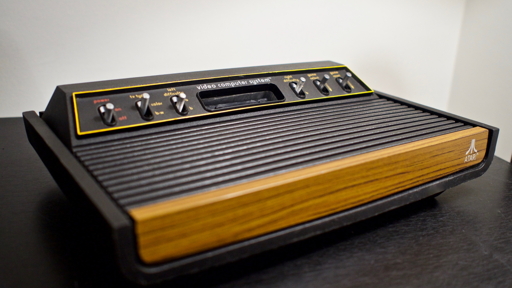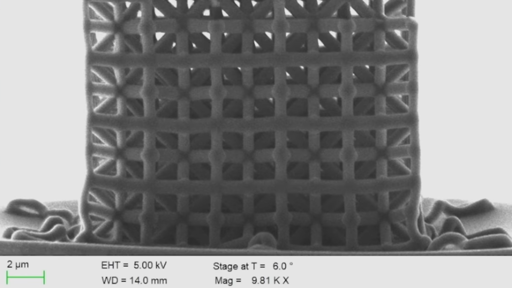Microsoft CFO calls for 'intensity' in an internal memo, after blowout earnings
-
customer expectations are continuously accelerating
Just make a functional OS that doesn't get in user's ways. Those are the expectations.
Microsoft doesn't expect growth in their OS offerings. These days all their focus is on AI and cloud.
-
"We're entering FY26 with clear priorities in security, quality, and AI transformation, building on our momentum and grounded in our mission and growth-mindset culture," Hood wrote, mentioning Nadella's email. "Both the pace of change and customer expectations are continuously accelerating."
Hood's email, notably, didn't mention Microsoft's recent workforce cuts, which have exceeded 10,000 this year even as profit swells. Nadella's email last week attempted to explain this "seeming incongruence" as the "enigma of success." Some employees weren't satisfied with the explanation.
These people get paid so much for spouting this utter bullshit every day. I hope they have moments when they realize the hollowness of what they do.
They know every single word is hollow. Eat it and rejoice peasant. Are you not filled?
-
They stopped venturing a long time ago. Microsoft should’ve been split up. Then maybe some of their consumer products would’ve survived and thrived. Even Windows OS seems like an afterthought these days.
Wait until Windows SE (subscription edition) comes out and you have to pay for it monthly.. that'll get those numbers up!
-
Publicly traded companies have to continually make more money than they did last month, last quarter, same time last year.
Failing to do so means they are somehow "losing" money that is "rightfully owed" to them and the stock market punishes them.
It doesn't matter if you're profitable or not, so long as you're continually making more money.
They actually have a legal obligation to maximize profits. It's insane.
-
The "someone" is the investors, or generally speaking, the market.
Major CEOs can't say they're taking a financial hit, for whatever reason. This is why I like working for small companies, and most Americans work for small businesses.
Last company: CEO announced to the board that he intended to lose money in order to build staff and products. Yes, he even included tech debt. The board applauded him.
Meh, we fucked around and still made a profit, so he gave the board the same report the following year, same results. We fucked around a made a profit. Again.
tl;dr: Don't mistake all CEOs for the bullshit you hear from Nadella and Musk and the like. Remember; You only hear crazy talk reported, because it's crazy talk.
Kinda like HMOs. You only hear about the bad ones because people in good ones don't bitch about them at every opportunity.
-
The money is real. Perhaps you don't work somewhere that pays to use Microsoft Enterprise services, but there are many and a lot are huge. Those companies build and/or do tangible things that others or consumers buy.
That doesn't mean the money is real.
-
That doesn't mean the money is real.
If we're going to get into a debate about what money is and represents, you might have an argument. If we accept that we use currency to exchange for goods, services, and labor, it is real money.
-
If we're going to get into a debate about what money is and represents, you might have an argument. If we accept that we use currency to exchange for goods, services, and labor, it is real money.
Then what is the function of the stock market for the economy?
You are arguing for an extremely simplistic vision of money that does not exist.
-
cross-posted from: https://lemmy.world/post/33767928
God I can't wait to get out of the grind.
I'm over halfway to freedom, I really want FIRE so I never have to deal with this corporate bullshit again.
-
Publicly traded companies have to continually make more money than they did last month, last quarter, same time last year.
Failing to do so means they are somehow "losing" money that is "rightfully owed" to them and the stock market punishes them.
It doesn't matter if you're profitable or not, so long as you're continually making more money.
It goes a layer further than that even. If the rate at which that growth is happening isn't itself growing then investors start getting nervous.
-
cross-posted from: https://lemmy.world/post/33767928
"intensity, clarity, and bold execution"
Not just "intensity".
-
Vertical integration. Windows underpins Office, and even cloud services.
Xbox though, they've already pretty much written its epitaph.
Xbox should’ve been the prestige product for Microsoft (just like Logic/Final Cut for Apple) but Xbox itself depleted any prestige it ever accumulated over the last few years.
-
Then what is the function of the stock market for the economy?
You are arguing for an extremely simplistic vision of money that does not exist.
The stock market is a way to publicly trade partial ownership of companies. The value of a stock is whatever people are willing to pay for it. That's based on speculation but at least somewhat anchored in the companies' revenues and profits/losses.
The revenues and profits/losses are real values reported quarterly. Projected revenues are just that - estimated future predictions. Of course there can be fraud, but that's unlikely from a company as large as Microsoft.
Event DJT, which has a valuation based on nothing but speculation and political loyalties still reports that they are losing money hand over fist.
-
Publicly traded companies have to continually make more money than they did last month, last quarter, same time last year.
Failing to do so means they are somehow "losing" money that is "rightfully owed" to them and the stock market punishes them.
It doesn't matter if you're profitable or not, so long as you're continually making more money.
It's not only "more". The company I work for had "record profits, far and beyond anything we were expecting" in 2021. In 2022, we were told that the company made more than in 2021, but didn't meet the earnings projections. That's still record profits, but phrased like a loss.
Not only must the line go up, but it has to go up faster than it did before. Nothing less than exponential growth.
-
The stock market is a way to publicly trade partial ownership of companies. The value of a stock is whatever people are willing to pay for it. That's based on speculation but at least somewhat anchored in the companies' revenues and profits/losses.
The revenues and profits/losses are real values reported quarterly. Projected revenues are just that - estimated future predictions. Of course there can be fraud, but that's unlikely from a company as large as Microsoft.
Event DJT, which has a valuation based on nothing but speculation and political loyalties still reports that they are losing money hand over fist.
The stock market is a way to publicly trade partial ownership of companies. The value of a stock is whatever people are willing to pay for it. That's based on speculation but at least somewhat anchored in the companies' revenues and profits/losses.
Sometimes it is but no the stock market is often very unanchored from any real sense of value and as a result all of the money involved becomes a part of something unreal that will catastrophically collapse at a later point.
Exhibit A) See Uber, it isn't even a business in any pure capitalist sense since it has never or almost never turned a profit.
No, the macro-economic function of the stock market is to determine the capitalist value of things, the stock market IS the hallucination at the center of the value of currencies like the US dollar.
You clearly believe in some magical power of rationality to the stock market like people believe in God, I can only debate you so far before your rhetorical defenses become purely emotional and based on feelings not facts.
-
They actually have a legal obligation to maximize profits. It's insane.
Technically they don't - it's a lie told often by CEO. But its a lie.
https://law.stanford.edu/wp-content/uploads/2023/01/Fiduciary-Duties-of-the-Board-of-Directors.pdf -
cross-posted from: https://lemmy.world/post/33767928
These people are fucking insane, Greed is a sickness and with Trump in the white house the disease is absolutely flourishing.
-
The "someone" is the investors, or generally speaking, the market.
Major CEOs can't say they're taking a financial hit, for whatever reason. This is why I like working for small companies, and most Americans work for small businesses.
Last company: CEO announced to the board that he intended to lose money in order to build staff and products. Yes, he even included tech debt. The board applauded him.
Meh, we fucked around and still made a profit, so he gave the board the same report the following year, same results. We fucked around a made a profit. Again.
tl;dr: Don't mistake all CEOs for the bullshit you hear from Nadella and Musk and the like. Remember; You only hear crazy talk reported, because it's crazy talk.
Worked for a company like that, but not everyone was happy. Investors were brought in and place went to shit. Sucks, but I got out just as it started getting worse.
-
cross-posted from: https://lemmy.world/post/33767928
quick, shut down activision blizzard king, bethesda, and xbox game studios before they make any more money
-
cross-posted from: https://lemmy.world/post/33767928
clicks reply
Intensity huh? Here you go
@#$% YOU







